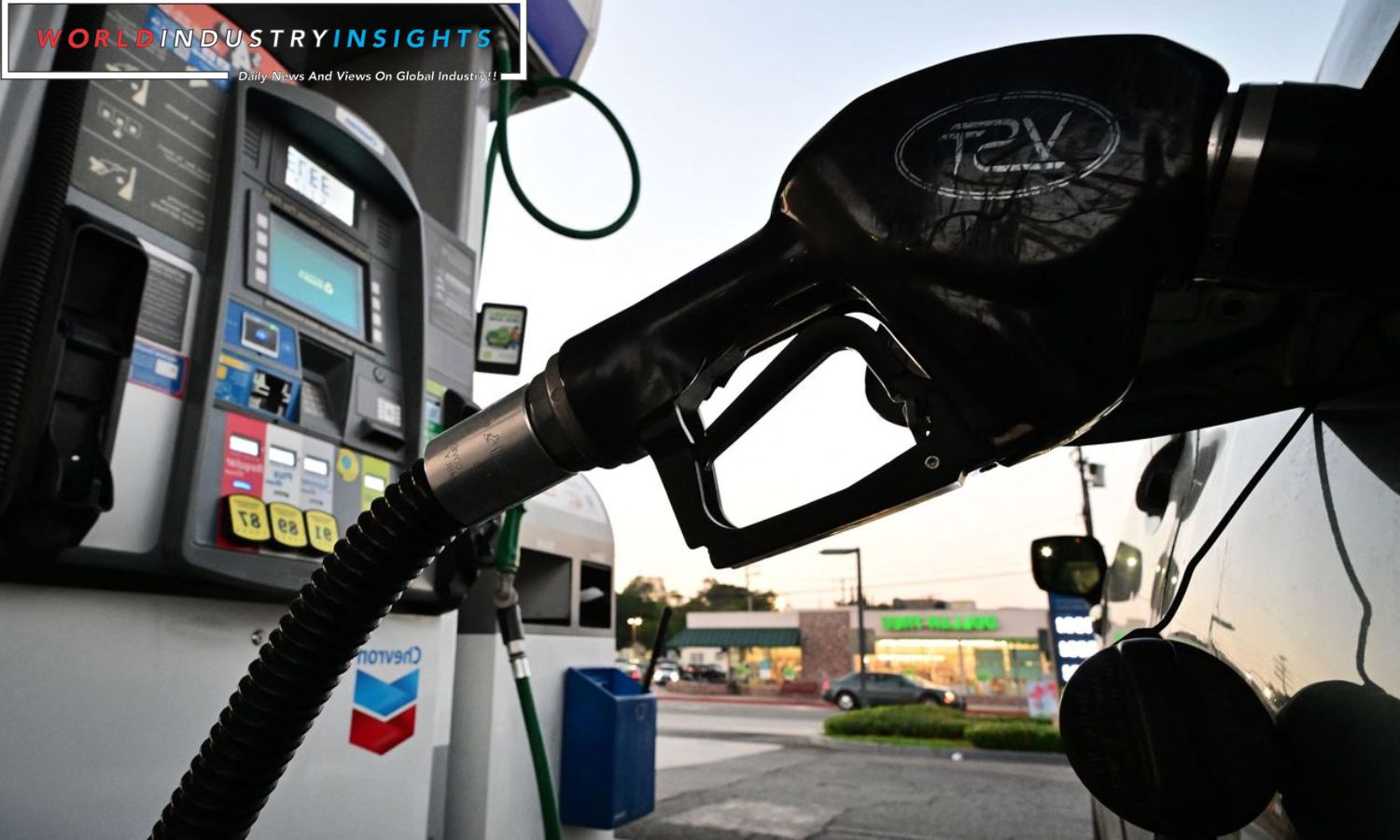Gas prices fueled inflation last month: Inflation spiked last month due to higher gas prices. The Federal Reserve found something good: inflation fell to its lowest level in two years.
In the year ending in August, the core PCE index, a reliable inflation tracker excluding gas and food prices, rose by 3.9%. According to recent data from the Commerce Department, this is the lowest annual growth in this index in the past two years. It aligns with the Fed’s 2% inflation goal.
In monthly changes, core PCE rose by 0.1%, the most controlled growth since April 2020, when it fell by 0.3%. A Vanguard economist, Andrew Patterson, praised the news as “a positive report for those wanting progress in the Fed’s fight for 2% inflation.”
In March 2022, the U.S. central bank raised the federal funds rate to a decades-high level. This was done to combat record inflation in over 40 years.
On September 18, 2023, a sign in Alhambra, CA, warned of gas prices exceeding $6/gallon. On September 15, 2023, supply issues in Saudi Arabia Russia, and flooding in Libya led to oil prices nearing $100 per barrel, the highest in ten months.
The PCE measure, including food and energy, increased by 0.4% from July and 3.5% from last year. Gas prices rose last month as expected, given the higher rates in July. From July to August, energy-related prices increased by 6.1%.
Refinitiv states economists expected PCE measures to increase by 0.5% monthly and 3.5% annually. People worried about rising energy prices, which could have increased inflation. Saudi Arabia and Russia’s extended production cuts increased oil prices.
The latest data from the Commerce Department showed consumer spending in August rose by 0.4%, slower than July’s 0.9% increase. The consumerist symphony continued. As a result, incomes increased by 0.4%.
Also Read: Surging Gas Prices: U.S. Average Reaches $3.82, Experts Concerned about Crude Oil Costs
Amidst financial system changes, economic instability loomed. The personal saving rate dropped for the third month, from 4.1% in July to 3.9% in August. Since December of the previous year, people have saved the least ever.
As the financial kaleidoscope darkened, scary monoliths appeared. When interest rates peaked, credit card debt and late payments increased, the job market and wage growth slowed.
The fact that she had to start repaying her school loans in October was a source of worry. Dana Peterson, the senior economist at the Conference Board, predicted the impact of getting these payments back on one’s extra money.
The financial opera peaked with the last report before a data blackout. The Commerce Department’s Personal Income and Outlays reports could become even more critical. If the U.S. government shuts down on October 1, this report could be the last crucial economic report until funding is figured out.
On September 16, 2023, the Washington Monument and the U.S. Capital was in the background as the country prepared for the fiscal year’s end and a potential government shutdown.
There was increasing uncertainty in the economy. If the government shuts down, important job market reports like the August Job Openings and Labor Turnover Survey and September jobs report would be delayed. As a backup plan, the 2,350 Bureau of Labor Statistics employees were to be sent home without pay. This would have halted economic research.
Possible delays could have effects beyond the job market. Data from the Census Bureau, PCE and GDP statistics, and home and car sales were all at risk. If the CPI is delayed, it may impact the Social Security Administration’s plans for the Cost of Living Adjustment in 2024.
“Without that data or if it is late, we can not predict the economy,” regretted Patterson of Vanguard. The economic ideas waited to see what would happen, unsure of the outcome.
Our Reader’s Queries
Is the price of gas causing inflation?
The recent decline in gas prices has played a significant role in the overall decrease in inflation. According to the latest government report, the Consumer Price Index increased by 3.1 percent in November compared to the previous year. However, the index also revealed that gas prices dropped by 5.8 percent in November, following a 4.9 percent decrease in October. This decline in gas prices has contributed to the slowdown in inflation, providing some relief to consumers.
Did inflation rise in September 2023?
In the period spanning September 2022 to September 2023, the Consumer Price Index for All Urban Consumers saw a rise of 3.7 percent (not seasonally adjusted). Food prices experienced a 3.7 percent increase from the previous year, while energy prices saw a slight dip of 0.5 percent.
Did inflation go up last month?
The US Inflation Rate currently stands at 3.14%, a slight decrease from last month’s 3.24% and a significant drop from last year’s 7.11%. This indicates a relatively stable economic environment, with prices rising at a moderate pace. It is important to keep an eye on inflation rates as they can impact the purchasing power of consumers and the overall health of the economy.
How much has inflation risen in 2023?
In the year leading up to June 2023, there was a 3.0 percent increase in consumer prices. This is a slight decrease from the 4.0 percent increase seen in the previous year ending in May 2023.


